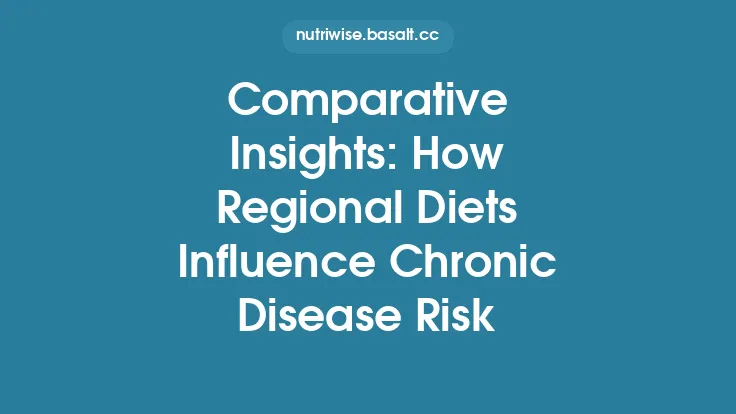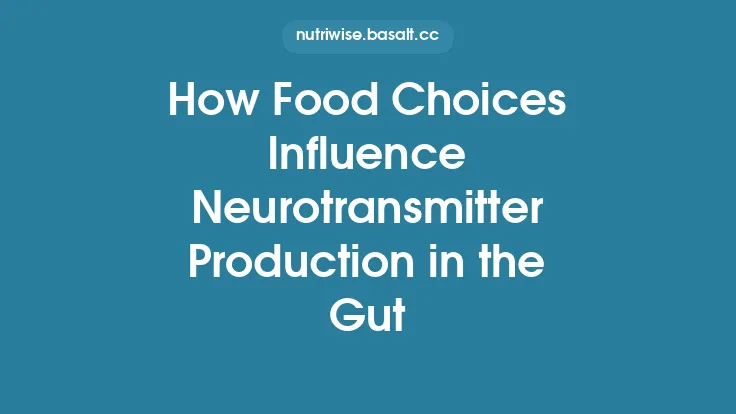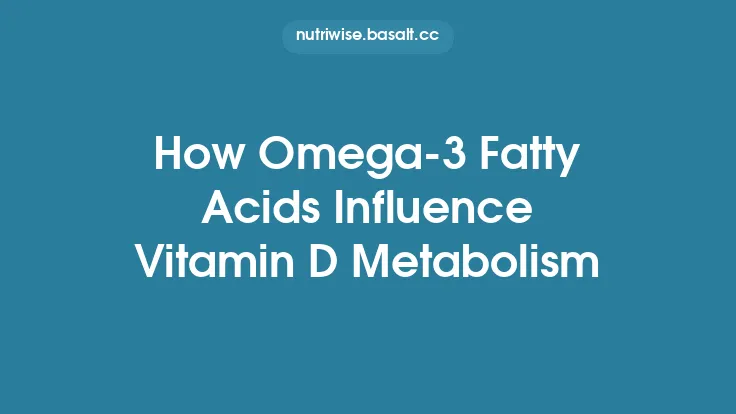Epigenetics—the study of heritable changes in gene activity that do not involve alterations to the underlying DNA sequence—has emerged as a pivotal bridge between our environment and our genome. While the genetic code provides the blueprint, epigenetic marks act as the switches and dials that determine which sections of that blueprint are read, when, and to what extent. Nutrition, alongside other lifestyle factors such as physical activity, stress, and sleep, can profoundly influence these epigenetic regulators, thereby modulating gene expression throughout the lifespan. Understanding how everyday choices shape the epigenome offers a powerful lens through which we can promote health, mitigate disease risk, and support optimal physiological function without relying on deterministic genetic predictions.
Understanding Epigenetics and Its Relevance to Nutrition
Epigenetic regulation primarily occurs through three interconnected mechanisms:
- DNA Methylation – The addition of a methyl group (CH₃) to cytosine residues, typically at CpG dinucleotides, which generally represses transcription when located in promoter regions.
- Histone Modifications – Post‑translational alterations (acetylation, methylation, phosphorylation, ubiquitination) of histone proteins around which DNA is wrapped, influencing chromatin accessibility.
- Non‑coding RNAs (ncRNAs) – Small (e.g., microRNAs) and long non‑coding RNAs that can guide chromatin-modifying complexes to specific genomic loci or directly interfere with messenger RNA translation.
Nutrients and bioactive food components serve as substrates, cofactors, or signaling molecules for the enzymes that write, read, and erase these marks. For instance, S‑adenosyl‑methionine (SAM), the universal methyl donor for DNA and histone methylation, is derived from dietary methionine and folate cycles. Conversely, compounds such as butyrate, a short‑chain fatty acid produced by gut microbial fermentation of fiber, act as histone deacetylase (HDAC) inhibitors, promoting a more relaxed chromatin state and enhancing gene transcription.
Key Epigenetic Mechanisms Modulated by Dietary Components
| Epigenetic Process | Primary Nutrient/Bioactive | Enzymatic Target | Typical Outcome on Gene Expression |
|---|---|---|---|
| DNA Methylation | Folate, vitamin B12, choline, betaine | DNA methyltransferases (DNMT1, DNMT3A/B) | Increased methyl donor availability → higher global or locus‑specific methylation, often silencing genes involved in inflammation or cell proliferation |
| Histone Acetylation | Short‑chain fatty acids (butyrate, propionate), polyphenols (resveratrol) | Histone acetyltransferases (HATs) & HDACs | HDAC inhibition → hyperacetylated histones → open chromatin → up‑regulation of metabolic and antioxidant genes |
| Histone Methylation | SAM, vitamin B6 (pyridoxal‑5′‑phosphate) | Histone methyltransferases (HMTs) & demethylases (KDMs) | Context‑dependent; e.g., H3K4me3 at promoters → activation, H3K27me3 → repression |
| MicroRNA Expression | Omega‑3 fatty acids, curcumin, sulforaphane | Dicer complex, transcription factors controlling miRNA genes | Modulation of miRNA profiles that target mRNAs for lipid metabolism, insulin signaling, and inflammatory pathways |
Major Food Groups and Their Epigenetic Impact
1. **Whole Grains, Legumes, and Fiber‑Rich Foods
- Mechanism: Fermentation of dietary fiber by colonic bacteria yields butyrate, a potent HDAC inhibitor.
- Effect: Enhances expression of genes involved in gut barrier integrity (e.g., *MUC2) and anti‑inflammatory pathways (e.g., IL‑10*).
2. **Cruciferous Vegetables (Broccoli, Brussels Sprouts, Kale)
- Mechanism: Contain glucosinolates that are hydrolyzed to sulforaphane, an inducer of phase‑II detoxification enzymes via Nrf2 activation and histone acetylation.
- Effect: Up‑regulates *NQO1 and HO‑1*, bolstering cellular antioxidant capacity.
3. **Berries and Polyphenol‑Rich Fruits
- Mechanism: Anthocyanins and flavonols can modulate DNMT activity and influence miRNA expression.
- Effect: Down‑regulation of pro‑inflammatory genes (*TNF‑α*, *IL‑6*) through promoter methylation and miRNA‑mediated silencing.
4. **Fatty Fish and Omega‑3 Rich Sources
- Mechanism: EPA/DHA serve as ligands for peroxisome proliferator‑activated receptors (PPARs) and can alter histone acetylation patterns.
- Effect: Promotes expression of genes governing lipid oxidation (*CPT1A*) and reduces expression of genes linked to chronic inflammation.
5. **Animal‑Based Proteins and Methyl Donor Sources
- Mechanism: Provide methionine, choline, and B‑vitamins essential for SAM synthesis.
- Effect: Supports proper DNA methylation during critical windows such as embryogenesis and may protect against aberrant hypomethylation associated with oncogene activation.
Lifestyle Factors Beyond Food: Exercise, Stress, and Sleep
While nutrition is a cornerstone, epigenetic regulation is a multidimensional response to the broader lifestyle milieu.
- Physical Activity: Endurance exercise elevates circulating lactate, which can be converted to acetyl‑CoA, a substrate for histone acetylation. Studies show increased H3K9ac at promoters of mitochondrial biogenesis genes (*PPARGC1A*) after regular training.
- Psychological Stress: Chronic cortisol exposure can alter DNMT expression, leading to hypermethylation of glucocorticoid receptor (*NR3C1*) promoters, potentially dampening stress resilience.
- Sleep Quality: Disrupted circadian rhythms affect the expression of clock genes (e.g., *BMAL1, PER2*) through rhythmic histone modifications. Adequate sleep maintains the oscillatory pattern of histone acetylation that synchronizes metabolic pathways.
Evidence from Human and Animal Studies
Human Cohort Findings
- The Dutch Hunger Winter (1944‑45): Offspring exposed in utero to famine displayed persistent hypomethylation of the *IGF2* gene decades later, correlating with increased risk of metabolic syndrome.
- Mediterranean Diet Intervention (PREDIMED): Participants adhering to a Mediterranean diet enriched with extra‑virgin olive oil showed increased global DNA methylation and reduced expression of inflammatory markers after one year.
Animal Model Insights
- Maternal Folate Supplementation in Mice: Elevated maternal folate levels enhanced DNA methylation at the *Agouti* locus in offspring, resulting in a shift from yellow (obese) to brown (lean) coat color, a classic epigenetic phenotype.
- Butyrate Administration in Rodents: Direct colonic infusion of butyrate increased histone acetylation in colonocytes, protecting against chemically induced colitis and tumorigenesis.
These studies collectively underscore that epigenetic modifications induced by diet and lifestyle are not merely transient; they can endure across the lifespan and, in some cases, be transmitted to subsequent generations.
Practical Strategies for Epigenetic‑Friendly Eating
- Prioritize Methyl‑Donor Nutrients: Incorporate leafy greens (folate), eggs or liver (choline), legumes, and fortified cereals to sustain SAM pools.
- Embrace Fiber Diversity: Aim for 25‑35 g of fiber daily from a mix of soluble (oats, apples) and insoluble (whole‑grain wheat, nuts) sources to fuel butyrate‑producing microbiota.
- Include Polyphenol‑Rich Foods: Daily servings of berries, green tea, and dark chocolate provide bioactive compounds that modulate DNMTs and miRNAs.
- Select Omega‑3 Sources: Fatty fish (salmon, sardines) or algae‑based supplements supply EPA/DHA for histone acetylation and PPAR activation.
- Balance Protein Sources: Combine plant‑based proteins (soy, lentils) with moderate animal protein to ensure adequate methionine without excess saturated fat.
- Mindful Cooking Methods: Light steaming or raw consumption preserves heat‑sensitive nutrients (e.g., vitamin C, folate) crucial for methylation pathways.
- Synchronize Meals with Circadian Rhythm: Consuming the largest meal earlier in the day aligns nutrient metabolism with peak insulin sensitivity and favorable epigenetic patterns.
Potential Clinical and Public Health Implications
- Disease Prevention: Epigenetic nutrition offers a non‑pharmacologic avenue to lower the incidence of chronic diseases such as type 2 diabetes, cardiovascular disease, and certain cancers by modulating gene networks involved in inflammation, lipid metabolism, and cell cycle control.
- Early‑Life Interventions: Targeted maternal nutrition programs can optimize fetal epigenetic programming, reducing the intergenerational transmission of metabolic risk.
- Population‑Level Strategies: Incorporating epigenetic considerations into dietary guidelines (e.g., emphasizing folate‑rich foods, fiber diversity) could enhance the effectiveness of public health nutrition policies.
- Biomarker Development: Emerging epigenetic signatures (e.g., methylation patterns in peripheral blood) may serve as early indicators of dietary adequacy or disease susceptibility, guiding preventive interventions.
Future Research Directions and Emerging Technologies
- Multi‑Omics Integration: Combining epigenomics with transcriptomics, metabolomics, and microbiome profiling will elucidate comprehensive pathways linking diet to phenotype.
- Longitudinal Epigenetic Monitoring: Wearable biosensors capable of detecting circulating metabolites (e.g., SAM, butyrate) could provide real‑time feedback on epigenetic status.
- CRISPR‑Based Epigenetic Editing: While still experimental, targeted demethylation or acetylation of disease‑relevant loci may complement nutritional approaches in therapeutic contexts.
- Personalized Epigenetic Nutrition: Beyond static genetic testing, dynamic assessment of an individual’s epigenetic landscape could inform tailored dietary recommendations that adapt to lifestyle changes.
- Intergenerational Studies: Large‑scale cohort studies tracking epigenetic marks across three generations will clarify the durability of nutrition‑induced epigenetic modifications.
By appreciating the fluid dialogue between what we eat, how we live, and the molecular switches that govern our genes, we can harness epigenetic nutrition as a sustainable, evidence‑based strategy for lifelong health. The emerging science underscores that while our DNA sets the stage, it is the everyday choices—plates, workouts, sleep patterns, and stress management—that write the script.





